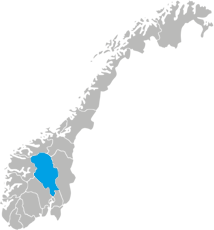About
In Langsua National Park you can stroll in a vast but gentle landscape of low mountains, lush mountain birch woodland, old growth coniferous forests, undulating heathlands and diverse wetlands. Mt. Skaget (1,685 m), Mt. Langsua (1,553 m) and other peaks offer magnificent views.
Langsua National Park is unspoilt by modern technology, but there are many traces of earlier activity, including iron production sites, coal pits and trapping systems for wild reindeer.
The landscape have a long history of pastoral farming. Grazing lands for domestic animals is characteristic of large parts of the National Park, contributing to a unique diversity of plants and birds. Bearded bellflowers (Campanula barbata) grow in light open spaces - this region is the only one in northern Europe where they can be found, their closest habitats being the Alps and the Carpathians.
In the exuberant birch woodlands you can find orchids, mountain violets, mezereon and tall herbs. The marshes and wetlands are important habitats for rare plants and birds, such as Hudson Bay sedge, weak sedge, Oeder’s lousewort, great snipe, hen harriers and Eurasian cranes. Rare fungi and lichen can be found on old and dead trees in the coniferous forest. In winter domestic reindeer and ptarmigan graze the high ridges, while hares and willow ptarmigan reigns the wooded bottom lands.
An active and varied outdoor experience awaits you in the Langsua National Park! There are long stretches of marked summer and winter trails. Cabins are available for those wishing to spend the night here. Hunting and fishing permits are readily available and the options are numerous. There is easy access from the main roads all around the park in summer (see map). In winter, access is restricted due to road closures.
“… and blessed are the peaceful wide open spaces in raging storms over solitary waters and sunshine through driving clouds…”
Theodor Caspari
Designated: 11 March 2011, extension of former Ormtjernkampen National Park (1968).
Protected area: 537.1 km2.
Location: Øystre Slidre Municipality, Nord-Aurdal Municipality, Nordre Land Municipality, Gausdal Municipality, Sør-Fron Municipality and Nord-Fron Municipality.
Reasons for designation: The area is protected in order to safeguard a large low-mountain wilderness area, with important habitats for rare and vulnerable plant and animal species, cultural heritage and Quaternary features.
Suggested hiking trails: see outtt.com/langsua
.png)
.png)















